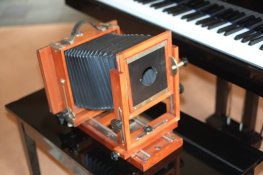Nobody seems to be addressing the real issues with architectural photography here, so I'll chime in:
First, if you plan on doing a lot of work close in with tall(er) structures and/or interiors, you are ideally going to want a lens with lots of coverage. While the 90mm SA f/8 is a good lens (I own one and use it a lot), it has significantly less coverage than the larger, faster 90mm lenses. If I were to choose a 90mm for architecture, it would the the Nikkor 90mm f/4.5, since it has the largest image circle in the group at f/22. Other good choices would be any of the f/5.6 wide designs from Fuji, Rodenstock or Schneider. The winner by far in this category, but rather expensive and large, is the SA XL f/5.6 with a 256mm image circle.
That said, I do a lot of architectural work with my 90mm SA f/8, but sometimes have to abandon or modify a shot due to coverage problems. Especially with a filter screwed on, it's pretty easy to vignette. If your requirements are purely architectural and lens size/weight is not so much of an issue, then go with a faster lens with more coverage. If, like me, architectural work is secondary and weight is an issue, then you may wish to compromise with the smaller lens.
Secondly, you will find you need movements and precision to get everything you want on to the film. Field cameras can be used for architectural work (I do it all the time), but you need to be extra careful applying movements and often need some tricks to compensate for lack of rise and/or shift. Again, if I were doing strictly architectural work, I would choose a full-featured monorail camera with plenty of movement and with a bellows (bag or universal) that allows a short-focal-length lens like a 90mm to be used with extreme movements.
That said, a recessed lensboard will help get a bit more movement out of a stiff bellows. The problem with them is that lens controls are often harder to deal with. I have a 90mm SA f/8 on a Technika recessed board and need a pencil or the end of the cable release to set aperture and open/close the viewing setting. A larger lens simply wouldn't fit on such a small board. Your boards may be bigger and a recessed one of those may accept one of the faster/larger 90mm lenses better.
Finally, a properly installed and oriented gridded ground glass is indispensable for good architectural work. Levels on the camera are important too, to get the initial set up, but the ground glass tells all. If you want parallel verticals, then the grid is your best friend. I've installed levels and gridded glass on my folding field cameras just for this purpose.
Bottom line, you'll have to asses your possibilities and maybe make some compromises. And don't let me discourage you from using your field cameras for architectural work. That is what I have done. Just be aware of what you are getting into. I need lightweight lenses and I use small folding field cameras almost exclusively. Plus, architectural work is only a part of what I do and I have a good grasp of manipulating my cameras to get a lot of effective rise and shift from them (plus the time to do that). Therefore, I use a 90mm SA f/8 in that focal length and deal with its limitations.
Hope this helps,
Doremus













